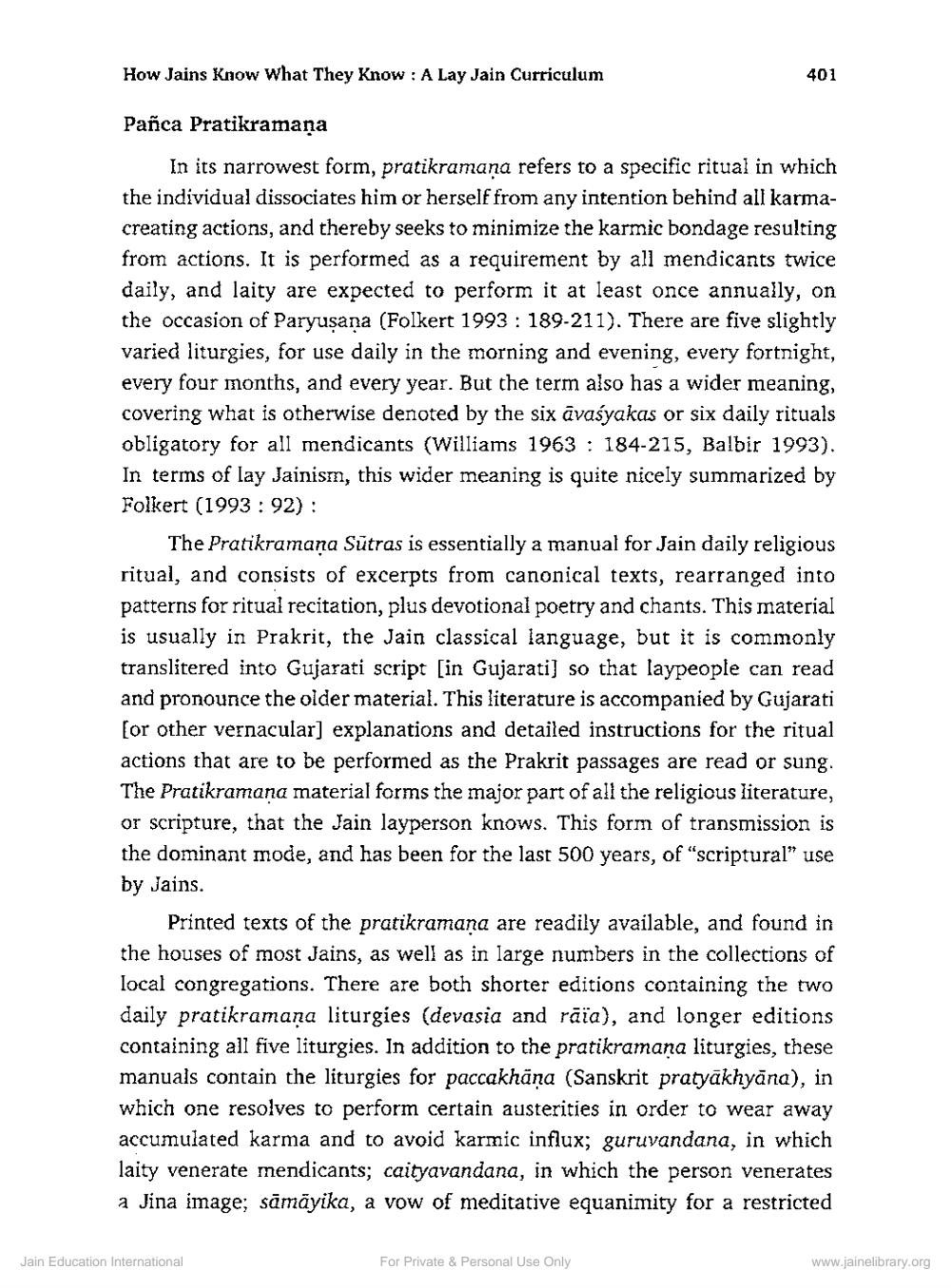Book Title: How Jains Know What They Know A Lay Jain Curriculum Author(s): John E Cort Publisher: Z_Nirgranth_Aetihasik_Lekh_Samucchay_Part_1_002105.pdf and Nirgranth_Aetihasik_Lekh_Samucchay_Part_2 View full book textPage 3
________________ How Jains Know What They Know : A Lay Jain Curriculum 401 Pañca Pratikramana In its narrowest form, pratikramana refers to a specific ritual in which the individual dissociates him or herself from any intention behind all karmacreating actions, and thereby seeks to minimize the karmic bondage resulting from actions. It is performed as a requirement by all mendicants twice daily, and laity are expected to perform it at least once annually, on the occasion of Paryusana (Folkert 1993 : 189-211). There are five slightly varied liturgies, for use daily in the morning and evening, every fortnight, every four months, and every year. But the term also has a wider meaning, covering what is otherwise denoted by the six avasyakas or six daily rituals obligatory for all mendicants (Williams 1963 : 184-215, Balbir 1993). In terms of lay Jainism, this wider meaning is quite nicely summarized by Folkert (1993: 92): The Pratikramana Sūtras is essentially a manual for Jain daily religious ritual, and consists of excerpts from canonical texts, rearranged into patterns for ritual recitation, plus devotional poetry and chants. This material is usually in Prakrit, the Jain classical language, but it is commonly translitered into Gujarati script [in Gujarati) so that laypeople can read and pronounce the older material. This literature is accompanied by Gujarati (or other vernacular) explanations and detailed instructions for the ritual actions that are to be performed as the Prakrit passages are read or sung. The Pratikramana material forms the major part of all the religious literature, or scripture, that the Jain layperson knows. This form of transmission is the dominant mode, and has been for the last 500 years, of 'scriptural" use by Jains. Printed texts of the pratikramana are readily available, and found in the houses of most Jains, as well as in large numbers in the collections of local congregations. There are both shorter editions containing the two daily pratikramaņa liturgies (devasia and raia), and longer editions containing all five liturgies. In addition to the pratikramana liturgies, these manuals contain the liturgies for paccakhāna (Sanskrit pratyākhyāna), in which one resolves to perform certain austerities in order to wear away accumulated karma and to avoid karmic influx; guruvandana, in which laity venerate mendicants; caityavandana, in which the person venerates a Jina image; samāyika, a vow of meditative equanimity for a restricted Jain Education International For Private & Personal Use Only www.jainelibrary.orgPage Navigation
1 2 3 4 5 6 7 8 9 10 11 12 13 14 15
